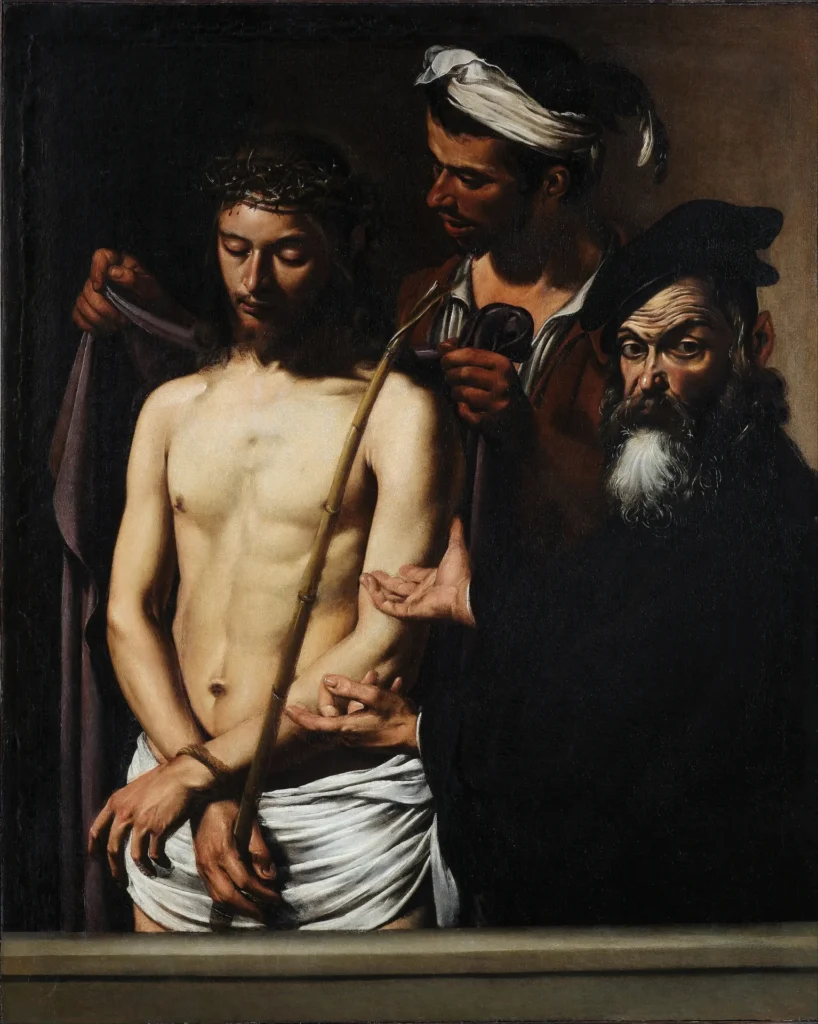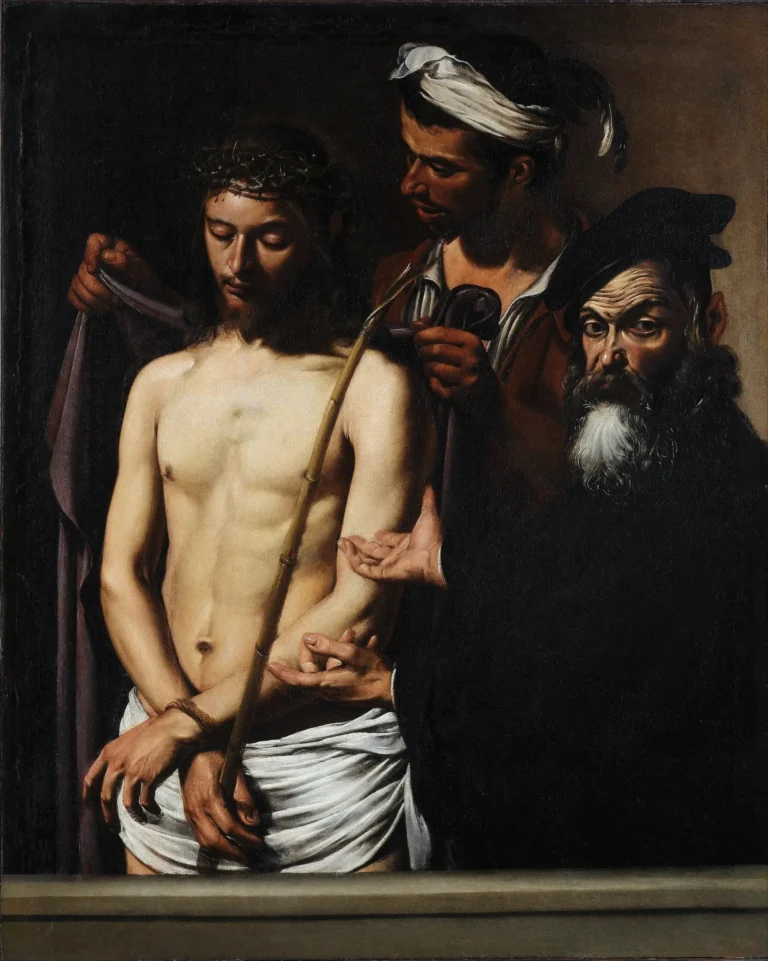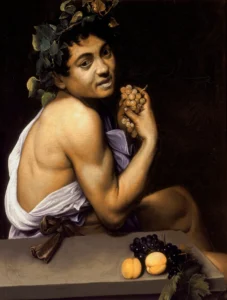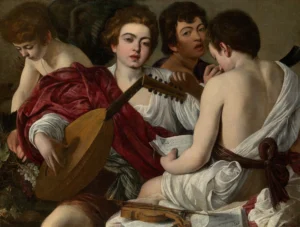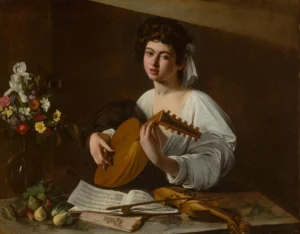Ecce Homo (circa 1605)
The Ecce Homo by Caravaggio is an iconic oil painting completed around 1605, portraying Christ after the crowning with thorns. Renowned for its dramatic use of light and shadow, this masterpiece powerfully juxtaposes psychological realism with emotional expression. Painted amidst personal turmoil for Caravaggio, the artwork reflects not only the narrative of Christ's trial but also the complexities of human emotion that resonate through the ages. Currently housed at Palazzo Bianco in Genoa, it remains a luminous example of Baroque artistry.
Circa 1605
About the Artwork
Did You Know
Liked what you see? Add it to your collection.
Enjoyed reading? Share it.
... continued
Artist and Date
The painting is attributed to the Italian Baroque master Caravaggio, with the exact date often cited as circa 1605, although some sources suggest it could be from 1605/06 or even 1609.
Medium and Dimensions
The painting is an oil on canvas work, measuring 128 cm × 103 cm (50 in × 41 in).
Location
The Ecce Homo is currently housed at the Palazzo Bianco in Genoa, Italy, though some sources incorrectly state it is at the Palazzo Rosso.
Historical Context
The painting was commissioned by Cardinal Massimo Massimi as part of an unannounced competition among three artists: Caravaggio, Cigoli, and Domenico Passignano. The artists were not informed that they were competing against each other. According to Giambattista Cardi, Cardinal Massimi preferred Cigoli's version, and the Passignano painting has never been found.
Artistic Style and Composition
Caravaggio's Ecce Homo combines two moments from the Passion of Jesus: the crowning with thorns and the display of Christ to the crowd by Pontius Pilate, as described in the Gospel of John (19:5). The painting features Caravaggio's characteristic use of chiaroscuro, with dramatic light emphasizing the figure of Christ. The scene is set on a balcony, adding a sense of contemporaneity with the standard official costume worn by Pilate. The handling of the figures, particularly Pilate's hands and the expressions of the characters, is typical of Caravaggio's late Roman period style.
Psychological Realism
The painting is noted for its psychological realism, especially in the faces of the characters. The torturer's face conveys both pity and sadism, while Pilate is depicted as stoic or neutral, possibly sympathetic. Some art historians believe that Caravaggio used his own face as a model for Pilate.
Challenges During Creation
During the time of the painting's creation, Caravaggio faced significant legal troubles, including an arrest for attacking a house and assaulting a notary. These issues led him to flee to Genoa, which may have affected his ability to meet the deadline for the commission.




